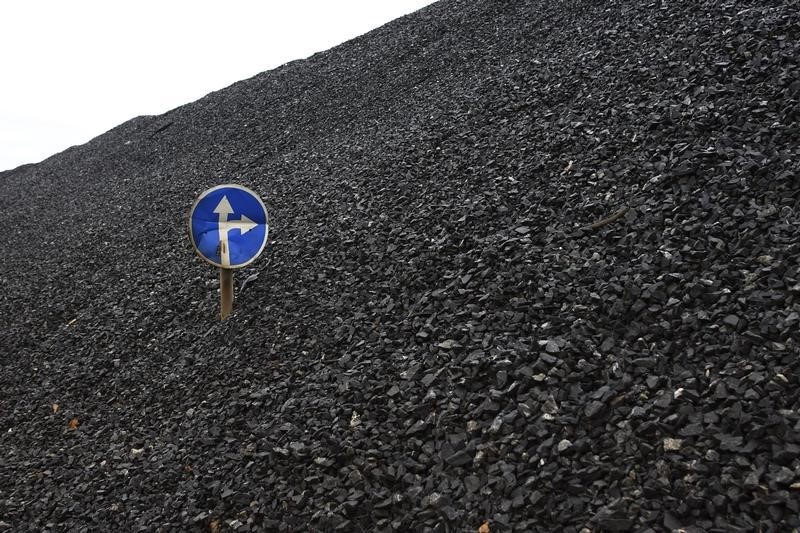(Repeats item issued earlier with no change to text. The opinions expressed here are those of the author, a columnist for Reuters.)
By Clyde Russell
LAUNCESTON, Australia, Nov 22 (Reuters) - It may be a tad early to call a peak in the price of thermal coal in top-consuming region Asia, but at the very least the momentum seems to have been lost from a commodity that has surged some 130 percent in the past 10 months.
If coal prices have already peaked, the question is which of the World War II battles of Dunkirk or Stalingrad will the retreat most resemble.
A Dunkirk-style retreat would see coal prices hold on to much of their gains this year, just as the British Army managed to keep much of its fighting strength by evacuating from France in the face of a German victory in 1940.
A Stalingrad-style defeat would see coal prices surrender most of their gains in a rout similar to what happened when the German Sixth Army was surrounded and annihilated by Soviet forces in the winter of 1942-43 at Stalingrad.
So far, the pullback in thermal coal prices has been very modest, with the Australian benchmark, the weekly Newcastle port index GCLNWCWIDX dropping to $100.52 a tonne in the week ended Nov. 18.
This was down from the 44-month high of $109.69 a tonne the previous week, and the first downward move since last August.
The index rose 131 percent between its 10-year low of $47.37 a tonne on Jan. 22 to its peak on Nov. 11.
While this is an exceptionally strong rally, history suggests that the retracement may be quite robust as well.
Between November 2006 and July 2008, the index surged 372 percent, with coal reaching its all-time high of $194.79 a tonne on July 4, 2008.
It then slumped by 69 percent, taking coal back to $60.30 a tonne by March 2009. However, this price was still almost $20 more than the starting point of the prior rally.
From the trough in March 2009, Newcastle coal rallied 126 percent to $136.30 a tonne by Jan. 14, 2011.
That peak marked the start of a five-year downward trend during which coal dropped 65 percent to the low in January this year.
Given that the two previous rallies in the Newcastle index were both followed by pullbacks of more than 60 percent, is it likely that history will repeat itself this time around?
THIS TIME IS DIFFERENT?
It's still possible that prices may not have peaked yet, given we are just at the start of peak northern hemisphere winter demand period.
But, if the $109.69 a tonne from Nov. 11 does represent the peak of this cycle, then a retreat in the order of 60 percent would take prices back to around $43 a tonne.
This seems extremely unlikely as an entirely different set of circumstances are prevailing this time around compared with the price plunges of 2008-09 and 2011-15.
In the rally up to July 2008 coal prices had been pulled along with other commodities as investors believed China's appetite for natural resources was insatiable.
The 2008 financial crisis and global recession crushed those hopes, and coal fell dramatically in tandem with other commodities as world economic growth stumbled.
In the rally from 2009-11, stimulus spending by China provided a platform for rising prices, especially since the supply response was slow in coming.
But when new mines came on stream and existing ones pumped up output, the rally fizzled and coal was set up for an extended slump as the excess capacity was worked through.
In stark contrast, the rally so far in 2016 has been mainly driven by Chinese domestic considerations, with the most important factor being the decision by the authorities in Beijing to limit the number of days coal mines could operate.
This led to a sharp drop in production, with China's output falling 11 percent in the first 10 months of 2016 from the same period a year earlier.
Imports couldn't make up for this shortfall, hence the sharp rise in the main Asian benchmark prices.
It's likely that this rally will be ended by Chinese political decisions, with Beijing reversing course and allowing mines to operate for 330 days a year, up from 276 before, ensuring supply will be adequate but not enough to collapse prices.
To suggest coal prices are heading for a rout also ignores the fact that there is far less spare capacity around currently, with those mines that survived the five-year slump operating as efficiently as they can.
And the pullbacks after the previous rallies had different dynamics, the first being a global recession and the second being an extended period of oversupply.
Neither of these are currently the case, suggesting that the pullback in coal prices will be more modest.
Given China's primacy in Asian coal markets, it's likely coal will drop to a level at which the majority of Chinese domestic mines can operate profitably and meet their debt obligations, while still selling at a price that won't stoke inflation or damage power utilities.
Where that magic number lies is open to debate, but it's unlikely to be above $100 a tonne or below $60.
(Editing by Richard Pullin)
